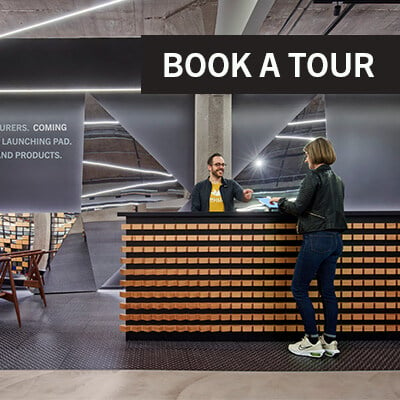We sat down with Sunny Trinh of Avnet and David Weksel of Panduit to discuss what they have been seeing as major trends on the horizon that all IIoT startups should be thinking about.

Blockchain
Insights from Sunny Trinh, VP of Demand Creation at Avnet
The foundation of IIoT is about hardware devices collecting data through sensors. How companies are collecting that data is less relevant, as long as teams are doing it efficiently and it meets the business model. Teams want to be able to collect said data to make systems better, last longer, be more cost effective, etc. In order to be able to perform analytics on data, teams need to have a very efficient system that's time ordered and cost effective, and secure. Blockchain fits all those cards. With blockchain, data isn’t stored in one centralized location that can be hacked. Teams are able to make it as secure as you want by having as many nodes as you want. Let's say you want a fairly secure system, you have 500 different computers for servers. That's working the blockchain together. If you want something even more secure, you can have 1,000 computers.
There are some challenges that come with bigger blockchain platforms, like Bitcoin. As platforms grow larger, they become harder to manage which is extremely inefficient due to its increase in energy use. With these larger platforms, teams are essentially doing proof of work for the entire blockchain and the bigger it grows, the more energy it's going to take. With smaller blockchain companies like Devvio, you can trade individual nodes that all talk to each other, making it more energy efficient.
Not only is Devvio energy efficient, it’s time efficient as well. Their interface runs on RESTful APIs, so a web developer can tie Devvio’s blockchain into a company in as short as one night, no blockchain language needed.
Privacy is nother reason that bigger blockchain projects have failed in the past. Companies don’t feel comfortable putting all of their personal information on a single server for the whole team. With Devvio’s software, they have created shards of networks for a company. Each company can have their own shard that interacts with other companies’ shards and only whatever data is necessary gets pulled into the bigger chain. And everyone manages their own security and privacy.

ESG
Insights from Sunny Trinh, VP of Demand Creation at Avnet
Sustainability isn’t going away anytime soon, it’s going to be the way of the future. In 2020, Tesla made $1.6B in carbon credits last year, more than they made on selling cars. The United States plans to be carbon neutral as a country by 2050, which means there will be a taxation on companies who are not carbon neutral. Public companies who don’t have a solid ESG sustainability plan will be hard to invest in at that point. ESG stands for Environmental, Social, and Corporate Governance, and it refers to the three factors in measuring the sustainability and societal impact of an investment in a company. Adding an ESG plan to a company’s business model is a huge chance for success.
Partners like Avnet and Panduit can help companies move towards a carbon neutral footprint. Avnet is currently partnering with Devvio on a platform that connects large companies who need to purchase carbon credits with companies who are generating the carbon credits by doing things like reducing gases or creating fertilizer with water and solar power.
This platform is also allowing these large companies to pre-buy carbon credits at a discount. So, it helps fund these things. And when they generate carbon credits and get it at a discount, over the next several years, the cost of carbon credits can go through the roof because there's going to be way more people needing it than people supplying it. Anybody who can take advantage of it now on both sides, will have a head start going forward.

Wearables
Insights from David Weksel, Director of Strategic Growth at Panduit
Wearables are known to be especially helpful in industrial environments as they provide location tracking, security information, and environmental metrics that teams can apply to their operations. One main application is making industrial environments safer for employees. For example, someone could be standing in the wrong location on the shop floor. They may be in a place that's subject to a lockout or a tagout or they’re too close to some equipment that's undergoing maintenance. The wearable application is there to help. In some instances, an alarm will go off or something will happen to give the team a heads up when someone is too close to equipment or a team member has fallen. mHUB member company Guardhat is a great example of a wearable within the industrial safety setting.
This application of wearables can also be applied in a healthcare setting. Fitbits and smart watches are examples of wearable sensors that you may interact with on a daily basis. Within the realms of safety, sensors can be used to monitor the location of patients on a healthcare campus. For example, if a patient with dementia wanders out of their room, a team can be notified immediately through the wearable the patient is wearing. mHUB member company, Careband, is doing just that.
Powering these wearables will always be a challenge. Picture the hundreds and hundreds of devices in any given setting that all need to be powered somehow. How do you get them power, and how do you manage it? In some cases, you need to know how much power they're using. It's a significant challenge to manage that power from a central location.
There are opportunities for wearable based startups to utilize the ability to manage data locally with edge computing. Edge computing gives devices support of the cloud to manage data as an intermediate step which provides a local network compute and memory for easier data access and management. These small, intermediate data centers can manage data locally and then schedule when to push it up to the cloud, a system which will impact new technologies moving forward.





